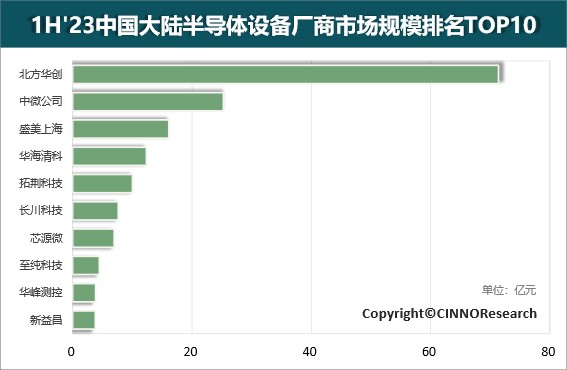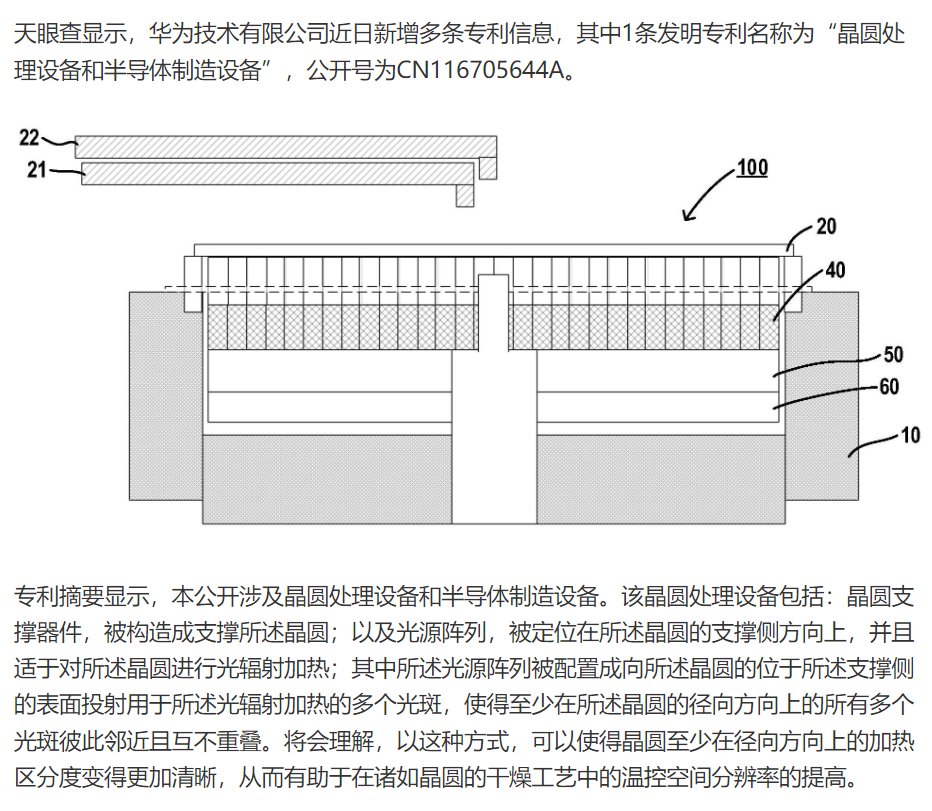And if you build it that way they will accused you of copying, stealing their IP and of course the yield is miserable, Cause it's impossible for the Chinese to innovate without them....lolBuild a skyscraper in a year and they’ll demand it be built in 6 months.
You are using an out of date browser. It may not display this or other websites correctly.
You should upgrade or use an alternative browser.
You should upgrade or use an alternative browser.
Chinese semiconductor industry
- Thread starter Hendrik_2000
- Start date
- Status
- Not open for further replies.
So I really don't know why everyone is reacting to additional sanctions with a bit of glee when it's obvious that it's going to hurt Chinese companies.
No pain, no gain.
Continued pressure on Chinese companies (whose default modus operandi--because they're capitalistic entities--would be to side with the US capitalist regime) is necessary for them to continue the de-Americanization process. They really need to cast away their delusions and prepare for battle, and sanctions forcing them away from the US ecosystem is really the only way for it to happen.
i usually agree with your analysis all the time .. but not this time..Actually I would say that in several cases the Chinese semi industry isn't moving fast enough. The tools and materials sector is especially weak. And this is not just for ICs but also display panels and the like. While several of these companies have now finally got financing from the Chinese stock market recently a lot of these projects are still not operational.
There are problems in IC manufacture with more than lithography tools, although that is just the most visible issue, lack of production of ArF photoresist in anything more than test batches is another problem, and there are likely issues with other supplies as well. Even in sectors where the materials industry is relatively strong, like with 300mm wafers, China still is not self-sufficient.
Chinese semi industry is rapidly moving towards localization. if we compare 2018 with 2023. in just 4 years they have completed 28nm and 14nm supply chain. YMTC switched to domestic tools. EDA/Photoresist breakthrough and many more ..
the localization rate of Chinese semiconductor equipment exceeded 40%. This figure has more than doubled in two years.. now imagine what will happen in next 2 to 3 years..
display industry supply chain used to be bread and butter for Japan .. China completed entire supply chain in just few years. BOE and other display makers mostly using domestic materials and tools.

CINNO Research on top 10 Chinese SMEs in 1H23 Top 10 firms grew 39% YoY
Naura largest 7.14B RMB up 68%
AMEC 2.53B up 28%
ACM Research 1.61B up 47%
Hwatsing 1.23B up 72%
Piotech 1B up 92%

All these Multi Billion RMB worth semi equipment Chinese companies. recorded highest ever growth .. where were all these companies in 2018-19 ?
and from past 3 years, central/local government supporting small enterprises, almost daily @tokenanalyst posted. some unknown Chinese semi equipment firm secured 100 M RMB, 200 M RMB finance.. big firms are generating even Billions.
the major hurdle right now is, verifying indigenous tools and scale up production. this will take time..
Last edited:
China’s EDA software provider UniVista releases five products to build a full-process EDA domestic platform
China’s EDA software startup UniVista(合见工软) launched five new products on October 12 at its “EDA New Domestic Multidimensional Evolution Forum” in Shanghai..
UniVista chairman Pan Jianyue said that developing controllable core EDA tools is a definite and necessary endeavor. In a little over a year of formal operation, UniVista has released a series of EDA products and solutions. These include the next-generation time-driven high-performance prototype verification system, UV APS (UniVista Advanced Prototyping System), advanced packaging collaborative design checking tool, UVI (UniVista Integrator), among others..
Pan emphasized that the five products represent the company’s ambitious goal to cover the verification product line for digital chips comprehensively. In the future, the company will continue to aspire to achieve multidimensional coverage in the realm of digital chip “IP + implementation + verification.”
In the past two years, UniVista has launched a total of 9 products, expanding its growth potential alongside over a hundred customers, with some products successfully achieving iterations.
Wei Shaojun, a professor at Tsinghua University and an IEEE Fellow, provided another perspective at the forum on why UniVista can become an outstanding domestic EDA enterprise, highlighting the company’s ability to “move with the times.”
UniVista’s verification product director, Cao Mengxia, introduced the brand-new commercial-grade, high-performance, all-scenario verification hardware system, UVHS (UniVista Unified Verification Hardware System).
Xiao Yuelong, the general manager of system design solutions, showcased the company’s all-new generation electronic system research and development management platform, UniVista EDMPro.
Yang Kai, the general manager of Nuorui Integrated Circuits at UniVista, presented the company’s “EDA+IP” strategy, providing a comprehensive introduction to the company’s first independently developed national PCIe Gen5 complete solution, UniVista PCIe Gen5 IP.
UniVista was founded in March 2021 in Shanghai as an industrial software and design solutions provider. The company has a team of many engineers with 15–20 years of EDA experience. With two rounds of financing completed, UniVista has garnered nearly RMB 3 billion($448.8 million)..
China’s EDA software startup UniVista(合见工软) launched five new products on October 12 at its “EDA New Domestic Multidimensional Evolution Forum” in Shanghai..
UniVista chairman Pan Jianyue said that developing controllable core EDA tools is a definite and necessary endeavor. In a little over a year of formal operation, UniVista has released a series of EDA products and solutions. These include the next-generation time-driven high-performance prototype verification system, UV APS (UniVista Advanced Prototyping System), advanced packaging collaborative design checking tool, UVI (UniVista Integrator), among others..
Pan emphasized that the five products represent the company’s ambitious goal to cover the verification product line for digital chips comprehensively. In the future, the company will continue to aspire to achieve multidimensional coverage in the realm of digital chip “IP + implementation + verification.”
In the past two years, UniVista has launched a total of 9 products, expanding its growth potential alongside over a hundred customers, with some products successfully achieving iterations.
Wei Shaojun, a professor at Tsinghua University and an IEEE Fellow, provided another perspective at the forum on why UniVista can become an outstanding domestic EDA enterprise, highlighting the company’s ability to “move with the times.”
UniVista’s verification product director, Cao Mengxia, introduced the brand-new commercial-grade, high-performance, all-scenario verification hardware system, UVHS (UniVista Unified Verification Hardware System).
Xiao Yuelong, the general manager of system design solutions, showcased the company’s all-new generation electronic system research and development management platform, UniVista EDMPro.
Yang Kai, the general manager of Nuorui Integrated Circuits at UniVista, presented the company’s “EDA+IP” strategy, providing a comprehensive introduction to the company’s first independently developed national PCIe Gen5 complete solution, UniVista PCIe Gen5 IP.
UniVista was founded in March 2021 in Shanghai as an industrial software and design solutions provider. The company has a team of many engineers with 15–20 years of EDA experience. With two rounds of financing completed, UniVista has garnered nearly RMB 3 billion($448.8 million)..
U.S. curbs export of more AI chips, including Nvidia H800, to China
PUBLISHED TUE, OCT 17 20238:45 AM EDTUPDATED MOMENTS AGO
- The U.S. Department of Commerce announced Tuesday that it planned to curb the sale of more advanced artificial intelligence chips to China.
- The new export restrictions will restrict the export of Nvidia’s A800 and H800 chips, senior administration officials said.
- The restrictions could also affect chips sold by Intel and AMD. Other rules will likely hamper the sale and export to China of semiconductor manufacturing equipment from companies such as Applied Materials, Lam and KLA.
U.S. curbs export of more AI chips, including Nvidia H800, to China
The updates are specifically designed to control access to computing power, which will significantly slow the PRC’s development of next-generation frontier model, and could be leveraged in ways that threaten the U.S. and our allies, especially because they could be used for military uses and modernization,” Raimondo said.
Expected export bans on A800 and H800. For certain big Chinese companies which were planning to buy them, they now have an egg on their face lolU.S. curbs export of more AI chips, including Nvidia H800, to China
PUBLISHED TUE, OCT 17 20238:45 AM EDTUPDATED MOMENTS AGO

- The U.S. Department of Commerce announced Tuesday that it planned to curb the sale of more advanced artificial intelligence chips to China.
- The new export restrictions will restrict the export of Nvidia’s A800 and H800 chips, senior administration officials said.
- The restrictions could also affect chips sold by Intel and AMD. Other rules will likely hamper the sale and export to China of semiconductor manufacturing equipment from companies such as Applied Materials, Lam and KLA.
U.S. curbs export of more AI chips, including Nvidia H800, to China
Also, technical specifications for bans are:
Under the 2022 rule, the US barred exports of chips that exceeded two thresholds: one for power and the other for the speed at which chips talk to each other. The commerce department is replacing the latter with a “performance density” measure that is explicitly designed to stop companies from finding workaround solutions.
The revamped export controls will prohibit the sale to Chinese groups of data centre chips that are capable of operating at speeds of 300 teraflops — meaning they can calculate 300tn operations per second — and above.
Sales of chips with speeds of 150 to 300 teraflops will be barred if they have a performance density of 370 gigaflops (bn calculations) per square millimetre or more. Chips that operate at those speeds but with lower performance density fall into a “grey zone”, meaning firms must notify the government about sales to China
this is becoming a real problem in China now. SMIC capacity is limited and Huawei is hogging it due to all this smartphone demand. So, we will see if Biren, Meta-X or Kunlun can get their design fabbed there
btw, this is not restricted to AI chips btw. how does other chip designers get access to SMIC capacities?
Is there supply chain issue stopping SMIC from
expanding?
- Status
- Not open for further replies.


